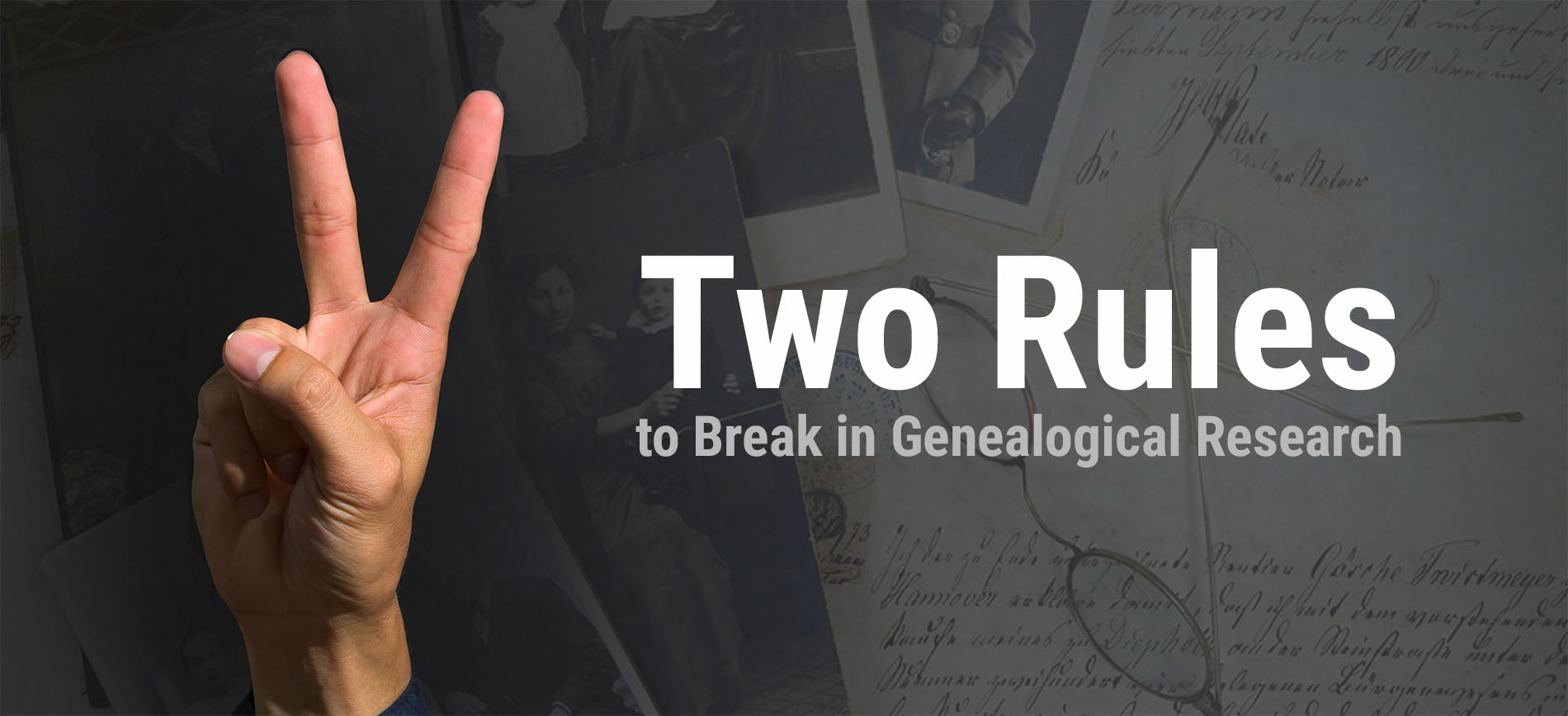
Two Rules to Break in Genealogical Research, by Elizabeth Shown Mills
“The Name’s the Same” Rule:
Identifying people is a significant challenge for historical writers—particularly people who played minor roles in an event or lived low-key lives. When we encounter records that bear the right name, in the right place and time, it is tempting to assume the record applies to our person of interest. The temptation is especially great when the name is not a common one, when courthouse fires and other natural disasters have destroyed many local records, or when we explore the random offerings of cyberspace.
With every find we must remember: “The name’s the same” does not mean the person is. It takes far more than a name to create an identity. Age, economic and social status, habits and haunts, land ownership (using the recorded legal description of that property), literacy, occupation, organizational affiliations, religion—and, above all, associates—are essential elements of each person’s identity.
The only way to protect ourselves against errors of false identification is by thorough research, careful correlation of data, and the study of individuals in the context of their neighbors, associates, and kin.
“Three Sources” Rule:
A popular maxim among some researchers contends that proof requires three sources, all reporting the same fact. Like many adages, this one is more of a mental cop-out than a sound premise. If three sources take their information from the same wrong source, they are all wrong. Conversely, highly skilled research may yield no single document that states a fact outright, yet a convincing case for a conclusion might still be built upon numerous pieces of indirect or negative evidence. Our objective, as researchers, is to conduct thorough research in a full range of sources.
Excerpted from Elizabeth Shown Mills, Evidence Explained: Citing History Sources from Artifacts to Cyberspace, 3d ed. rev. (Baltimore: Genealogical Publishing Co., 2017), p. 28, §1.20–1.21.




